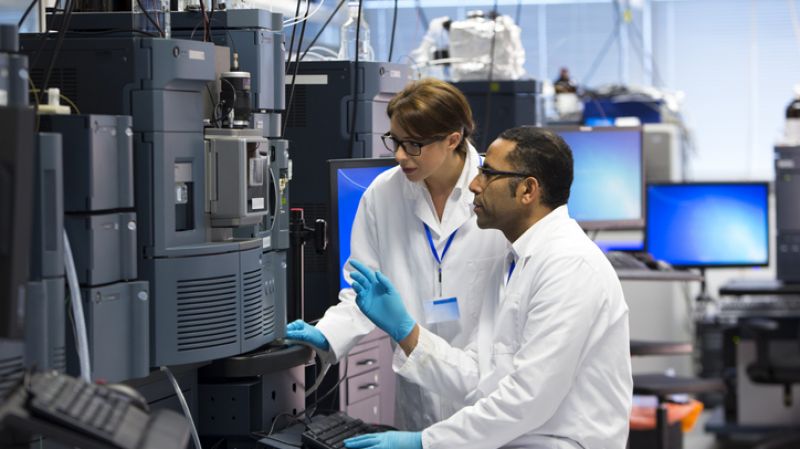Innovation in Dangerous Times: Pedal to the Metal
When the economy goes sour, firms tend to pull back on their research and development. Here’s why they should fight their instincts and forge ahead

- A study found that uncertainty in the national economy and growth in R&D spending are negatively correlated: as economic uncertainty increases, R&D spending by firms decreases.
- Similarly, when economic uncertainty is high, governments do not increase R&D funding to counter the disincentives of investing.
- Instead, firms reliant on innovation should fight their instincts and not pull back on R&D spending when the broader economy experiences turbulence.
For many firms, innovation via research and development (R&D) is an essential pathway to sustained commercial success. It’s essential for national prosperity as well; R&D spending creates jobs, boosts productivity, and fuels healthy competition.
The relationship goes both ways. When the national economy is booming, R&D taps are wide open. But in times of recession or economic shocks, CEOs — and government legislators, for that matter — too often turn skittish and slash R&D spending and incentives. This could be bad news for firms and the larger economy.
Olena Ivus, E. Marie Shantz Fellow of Business Economics at Smith School of Business, Queen’s University, has long studied the connection between innovation markers such as R&D spending or IP rights and the national economy. In research for the Centre for International Governance Innovation (CIGI), conducted with CIGI research associate Joanna Wajda, Ivus examined different measures of macroeconomic performance from 30 countries to assess their impact on R&D growth. She found that uncertainty in the national economy and growth in R&D spending are negatively correlated. In other words, as economic uncertainty increases, R&D spending decreases.
A similar dynamic is at play among government policymakers, who can usually be counted upon to support innovation with grants and other financial levers. Ivus found that when economic uncertainty is high, governments do not increase R&D funding to counter the disincentives of investing.
False Economy
As Ivus notes, there is a certain logic to this behaviour, particularly among firms. R&D investment, after all, is more sensitive to economic uncertainty than other types of investments. This is driven by a couple of factors. For one thing, R&D often comes with steep up-front costs — particularly highly-skilled labour and expensive equipment — that are hard to reverse. That’s what makes it particularly risky. When R&D projects fail to pan out, a large portion of their costs are unrecoverable.
Firms can also choose to delay their R&D spending to a future time, enabling them to mitigate some of the perceived risk during economic uncertainty.
Ivus argues that firms reliant on innovation should fight their instincts and keep their proverbial foot on the R&D gas pedal, even when the broader economy experiences turbulence.
First, it can be strategically advantageous to invest in R&D, especially when it comes to highly competitive markets or segments. In these situations, delaying investment in R&D can cause a firm to slip behind and lose out on market share to competing brands.
Second, in cases where the cost of investment can be expected to rise in the future, it is advantageous to invest sooner rather than later.
And third, it’s easier for a firm to maintain its R&D momentum through a downturn than pressing pause in the interim and restarting investment at a later time. Indeed, research has shown that frequently starting and stopping R&D is inefficient. According to this research, persistent R&D spending can improve the quantity of R&D output by 5 to 10 percent and the quality of such output by up to 30 percent.
Persistent spending can improve the quality of R&D output by up to 30 percent
For policymakers focused on innovation capacity, the most telling message from this study is that governments need to do whatever they can to reduce uncertainty. Given the deleterious effects of economic uncertainty on R&D spending, legislators should increase R&D tax credit incentives and direct subsidies, maintain a consistent tax policy, pick a policy lane and stick with it, and work with other developed countries to stabilize financial markets. Admittedly, this is difficult to sustain over election cycles.
And governments should take a long look at intellectual property rights (IPRs), an issue that Ivus has long championed. It’s a fine line: Overly strong IPRs may encourage firms to patent weak innovations strictly for strategic purposes. Overly weak IPRs open the door to imitation and limit firms from taking full advantage of their innovations.
Finding the right balance on IPRs is important since patent protection can reduce the negative influence of uncertainty on firm-level R&D investment. “Obtaining a patent reduces the irreversibility of R&D investment,” writes Ivus and Wajda in their paper. “If business conditions become unfavourable, companies can recoup a portion of their original innovation investments by selling their IPRs.”
Of course, not all uncertainty is bad for innovation. Ivus offers the high-tech revolution of the early to mid-1990s as an example of “good” uncertainty and the collapse of Lehman Brothers in the fall of 2008 as an example of “bad” uncertainty. While good and bad uncertainty tend to move together, they have opposing effects on R&D investment. Given the stakes involved, governments would be wise to double down on their innovation agendas during bumpy times.
—Kate Irwin